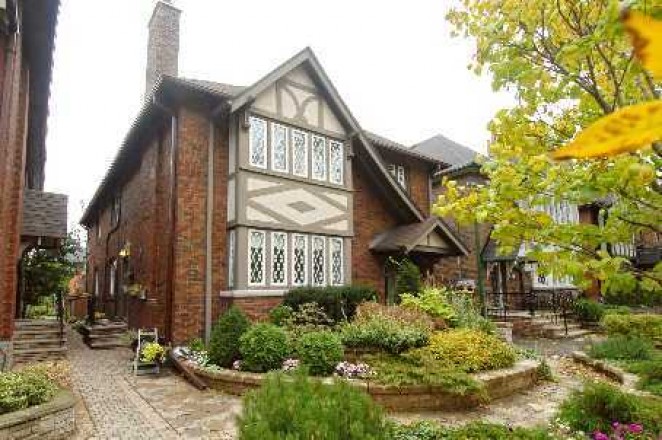Dec 01
20130
commentsBy Gary Goba
In Tips
Tagsbest agent best real estate agent Chestnut Park condo down payment downpayment Home Buyers' Plan market update mortgage real estate tips rebate rebate program rebate programs top agent toronto condo toronto market update toronto real estate market toronto real estate market update Toronto's best
Green Condo Checklist
Green Condo Checklist
What is LEED?
The Leadership in Energy and Environmental Design (LEED) rating system promotes an integrated building design approach grounded in five key LEED® categories: Sustainable Sites, Water Efficiency, Energy and Atmosphere, Materials and Resources, and Indoor Environmental Quality. Initially created by the US Green Building Council (USGBC), the Canada Green Building Council (CaGBC) has since modified the rating system to suit the specific concerns and requirements of buildings in Canada. LEED® is flexible enough to accommodate a wide range of green building strategies that best fit the constraints and goals of particular projects. For more information about LEED® programs in Canada, please visit http://www.cagbc.org/leed/what/
Buying a Green Condo Checklist
General:
- Look for recognized green building standards like LEED or BOMA BESt to ensure your condo is built according to verifiable sustainability standards.
- Are water, electric and gas use individually metered? This results in dramatically increased self-imposed conservation in condo units when compared to common shared heating, electric and gas. Insist on a programmable thermostat and turn it down in the winter and up in the summer.
Location
- Is the condo located in close proximity to your place of work? can you walk to work? Is it near public transit? Is the neighborhood cyclist and pedestrian friendly?
- Does the property include a variety of permeable surface areas like garden, lawn and water features?
- Does the building include a green roof?
Water and Energy
- Are plumbing fixtures water-efficient?
- Does the condo support the use of renewable energy sources such as wind, solar and geothermal?
- Are lighting fixtures energy efficient and using compact fluorescent (CFL) or LED bulbs?
- Is waste-water or run-off water harvested and reused for non-potable uses? Is the outdoor environment landscaped to efficiently use irrigation water?
- Does the condo support the use of renewable energy sources such as wind, solar and geothermal?
- Are lighting fixtures energy-efficient and using compact fluorescent (CFL) or LED bulbs?
- Is waste-water or run-off water harvested and reused for non-potable uses? Is the outdoor environment landscaped to efficiently use irrigation water?
- Are the included standard fixtures Energy Star® compliant? Are there incentives offered by the condo to purchase high-efficiency appliances?
- Does the condo incorporate high efficiency windows and doors and are effective blinds pre-installed? Are they properly placed in the design of the condo unit?
- What ratio of the outside walls are windows? In most buildings, 40% window to 60% wall provides the best balance of insulation and daylight and views.
Sustainable Materials
- Are the materials used in construction or finishing of the condo such as cabinets, floors and furniture made from renewable resources? Do they have a high recycled content? Have the products been sourced locally?
Indoor Environmental Quality
- Are the flooring, paint and other finishes non toxic with low volatile organic compounds (VOCs)?
- How is fresh air delivered to the suites? Is it delivered from the corridor under the doors of the suite, or is it ducted separately to each suite to minimize the risk of odour transfer?
- Is energy recovered from the air exhausted from the suites (usually bathroom exhaust) before it is released outdoors? This is typically done in a dedicated suite heat recovery ventilator (HRV), or in a central energy recovery ventilator (ERV).
Green Condo Map
http://www.cagbctoronto.org/tools-resources/green-building-map
Greening Your Existing Condo
- Where possible, replace existing light fixtures and bulbs with modern and energy efficient compact fluorescent (CFL) and LED bulbs to reap significant energy savings
- Install Energy Star® lighting fixtures and appliances where possible
- Turn down your water heater to a reasonable temperature. Do you need near-boiling water on demand at all times?
- Install ceiling fans to circulate cool or warm air throughout your condo space. This can be particularly effective within new “loft style” condos with high ceilings.
- Use high efficiency LED lighting during the holidays and turn them off when you’re not enjoying them
- Use a programmable thermostat to reduce energy costs when you are away or at night when you are sleeping
- Repair plumbing leaks and conserve water by selecting water-efficient plumbing products like faucets, shower heads and toilets and use less water when possible
- Choose natural or sustainable flooring products like FSC certified hardwood floors and non-off-gassing carpeting made from sustainable materials
- Institute waste reduction and recycling programs to reduce the costs associated with waste disposal and help to reduce overall waste to landfill
- Start a ‘Green Best Practices Committee’ to help your condo corporation and board focus on the greening of the common areas of your condominium
Provided by the Canada Green Building Council
About the Canada Green Building Council – Greater Toronto Chapter
The Canada Green Building Council (CaGBC) is a non-profit national organization formed to accelerate the design and construction of green buildings in Canada. The Council’s objective is to work with its partners in government and the private sector to accelerate the “mainstream adoption of green building principles, policies, practices, standards and tools.”
The Canada Green Building Council – Greater Toronto Chapter (CaGBC-GTC) was the first Chapter of the Canada Green Building Council. It is comprised of leading individuals from government, the building industry, suppliers and professionals, altogether representing the various segments of the design and building industry.
Together, the CaGBC and the Greater Toronto Chapter symbolize the broad interests that are necessary to come together and motivate change in the built environment.





